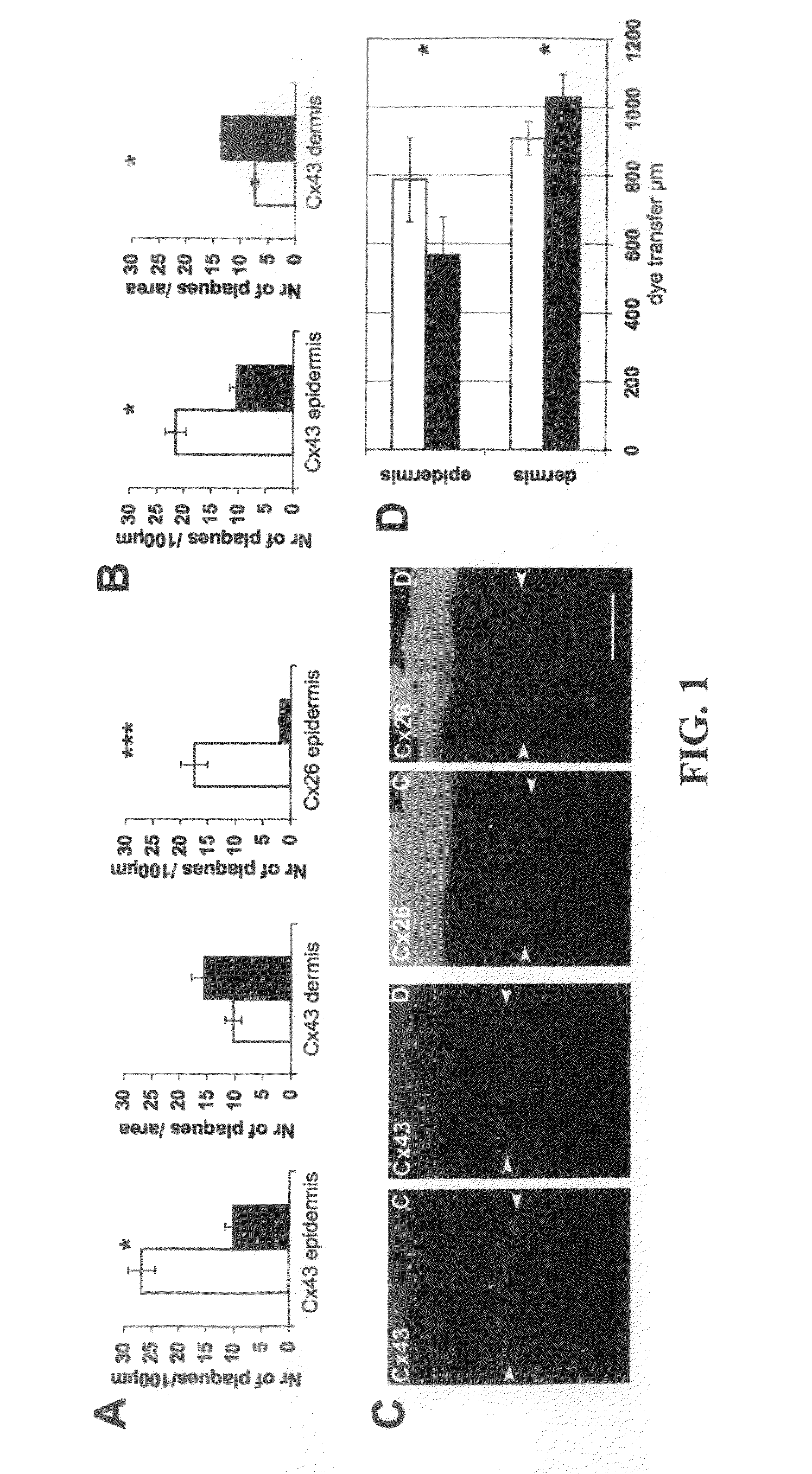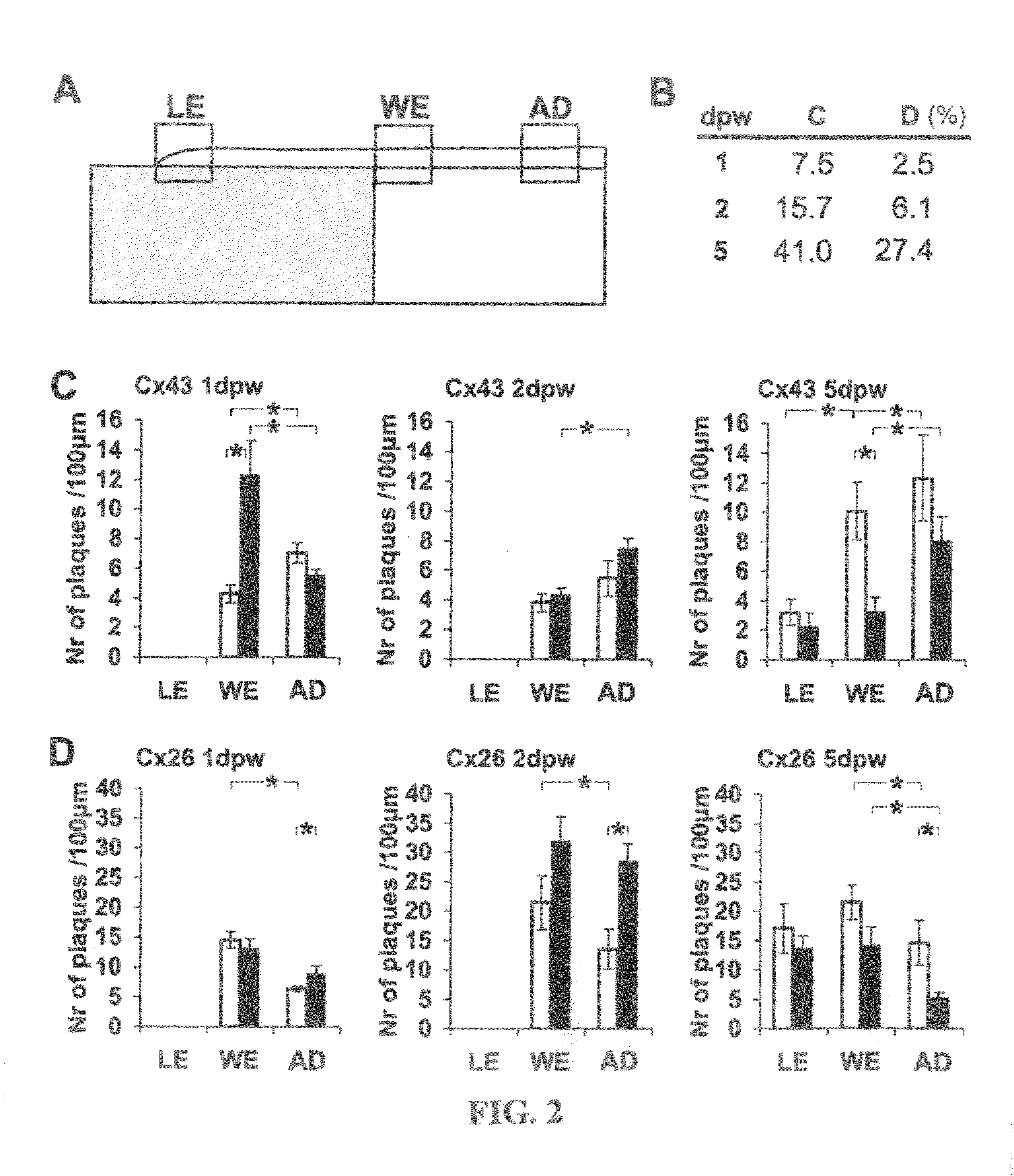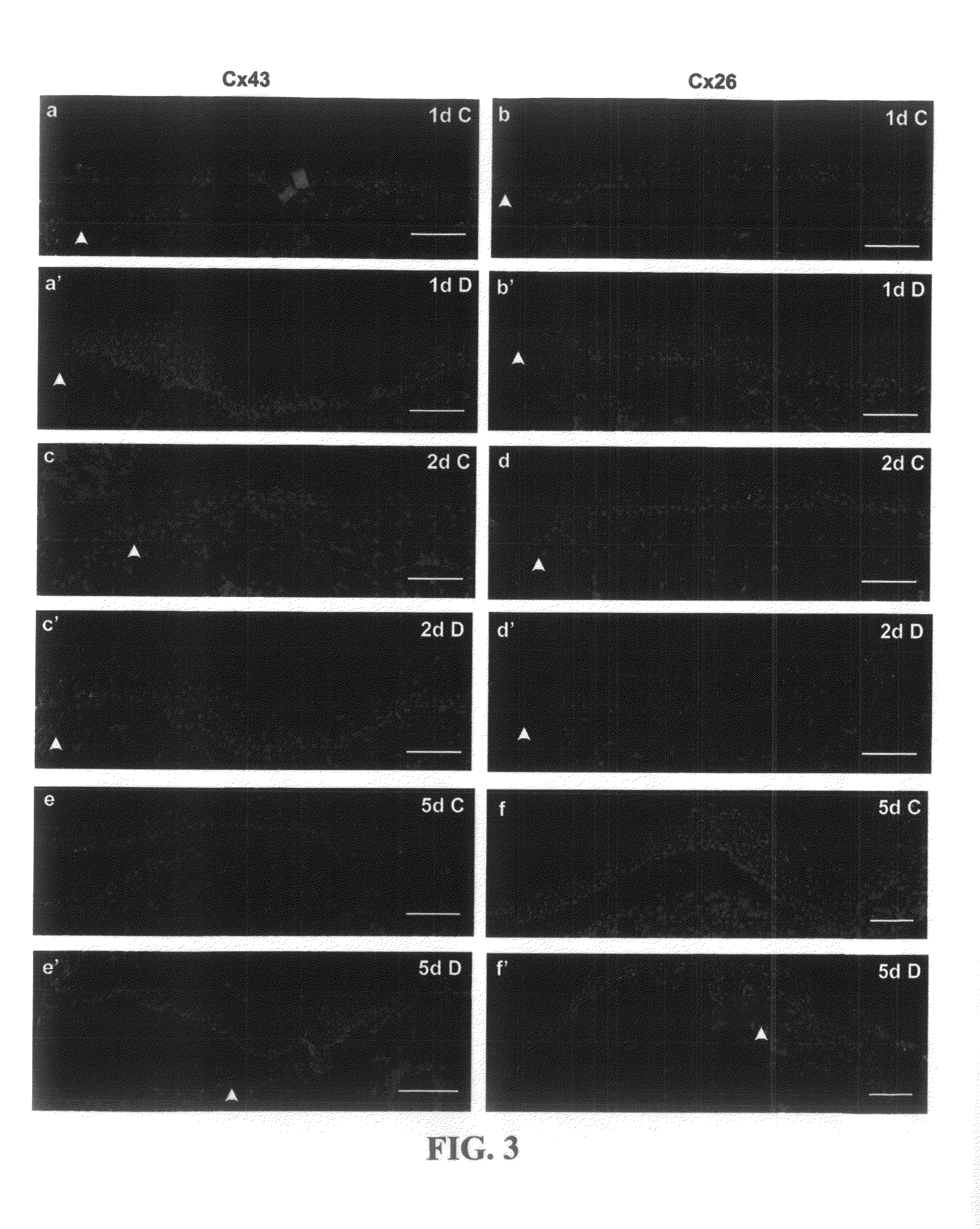Impaired wound healing compositions and treatments
a composition and wound technology, applied in the field of gap junctions and wounds and wound healing, can solve the problem of significant unmet need for suitable wound care treatment options, and achieve the effect of improving wound outcome and reducing healing tim
- Summary
- Abstract
- Description
- Claims
- Application Information
AI Technical Summary
Benefits of technology
Problems solved by technology
Method used
Image
Examples
example 1
[0193]Oligodeoxynucleotides were prepared with the following sequences:
GTA ATT GCG GCA GGA GGA ATT GTT TCT CTC (connexin 43) (SEQ. ID. NO:2)
GAC AGA AAC AAT TCC TCC TGC CGC ATT TAC (sense control) (SEQ. ID. NO:7)
[0194]Diabetes was induced in adult Sprague-Dawley rats (350-400 g) by a single intraperitoneal injection containing streptozotocin, 65 mg / kg, in citrate buffer (Shotton H R, et al. (2003) Diabetes. 52:157-64) (N=six diabetic, six control). Most diabetic wound-healing studies have been carried out two weeks after diabetes induction and the same time point was used for this wound healing study. However, connexin expression in diabetic rat skin was also examined at eight weeks (N=six diabetic, six control) to confirm that the changes detected at two weeks remained the same. Normal back skin was excised, cryosectioned, immunostained for connexins, imaged by confocal microscopy and the staining quantified as in Saitongdee et al. (2000). Cardiovascular Res. 47, 108-115.
[0195]Rats ...
example 2
[0212]The invention has been successfully used to treat a human subject with a large chronic wound, in this case a vasculitic ulcer, on a compassionate use basis.
[0213]A 49 year old male with underlying peripheral vascular disease first presented for complications arising from a non-closing leg wound. This patient had undergone a left below-knee amputation secondary to trauma, which subsequently dehisced as a result of a fall. Over a greater than 6-month period the wound had been unresponsive to all forms of established care. The patient underwent multiple topical treatments in an attempt to heal the wound, including the application of growth factor, antimicrobial dressings, VAC (vacuum assisted closure), xenograft dressing, with no significant change. The patient then fell and further injured the wound site. This was followed by multiple surgical debridements and replacement of the xenograft. The wound continued to increase in size and was considered to have become limb-threatening...
example 3
[0217]The invention has been successfully used to treat a human subject with a venous chronic wound.
[0218]An 86 year old male with underlying peripheral edema presented with complications from a five-month old, non-healing chronic venous ulcer. Over this period the wound had been unresponsive to all forms of established care in the community. The patient underwent multiple topical treatments in an attempt to heal the wound, including antimicrobials and the application of a pressure bandage to reduce edema. Over this period of time the wound continued to increase in size. The patient was scheduled to undergo knee replacement surgery, but was informed that the operation could not proceed in the presence of an open chronic wound.
[0219]Thus, due to the nature of the wound, which was also inflamed and swollen within the wound bed and particularly at the edges, the patient was considered as a compassionate use case and informed consent was obtained in order to treat the patient. The wound...
PUM
| Property | Measurement | Unit |
|---|---|---|
| capillary return time | aaaaa | aaaaa |
| melting temperature | aaaaa | aaaaa |
| melting temperature | aaaaa | aaaaa |
Abstract
Description
Claims
Application Information
 Login to View More
Login to View More - R&D
- Intellectual Property
- Life Sciences
- Materials
- Tech Scout
- Unparalleled Data Quality
- Higher Quality Content
- 60% Fewer Hallucinations
Browse by: Latest US Patents, China's latest patents, Technical Efficacy Thesaurus, Application Domain, Technology Topic, Popular Technical Reports.
© 2025 PatSnap. All rights reserved.Legal|Privacy policy|Modern Slavery Act Transparency Statement|Sitemap|About US| Contact US: help@patsnap.com



